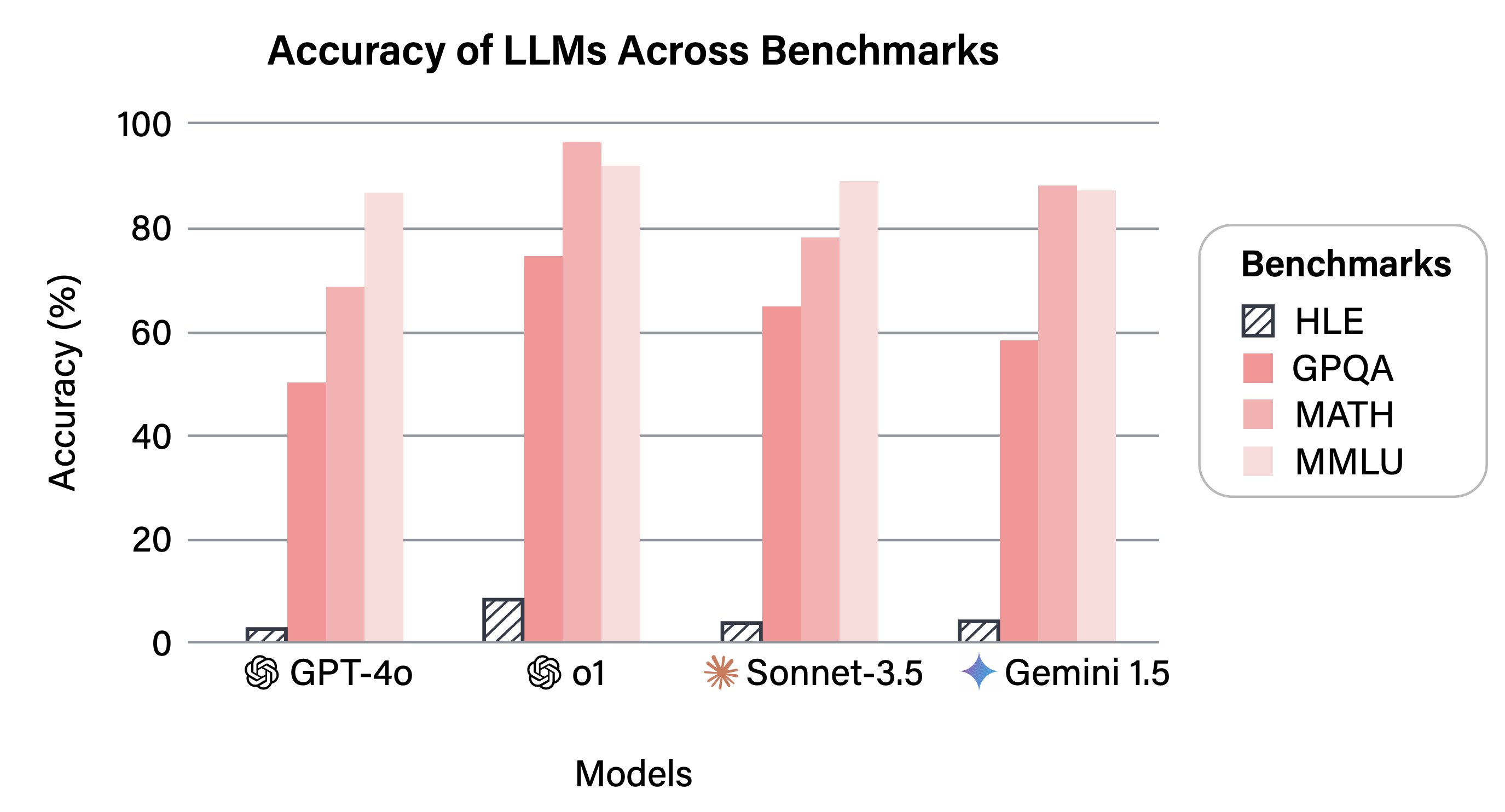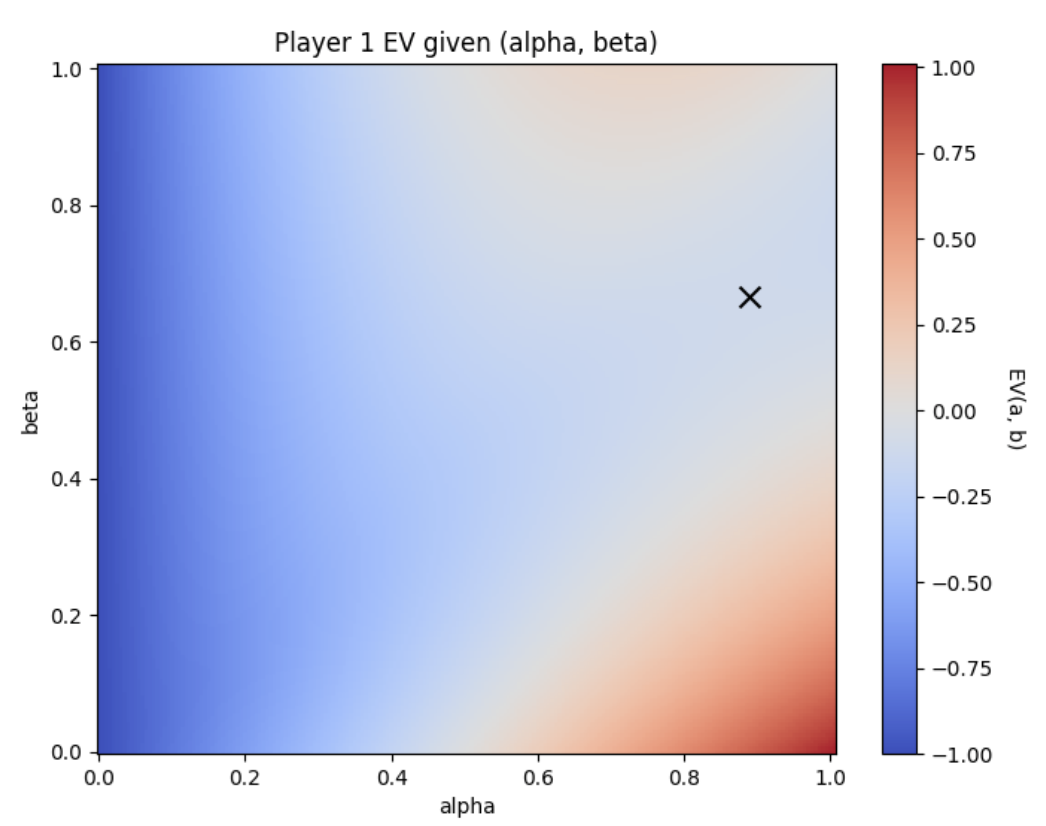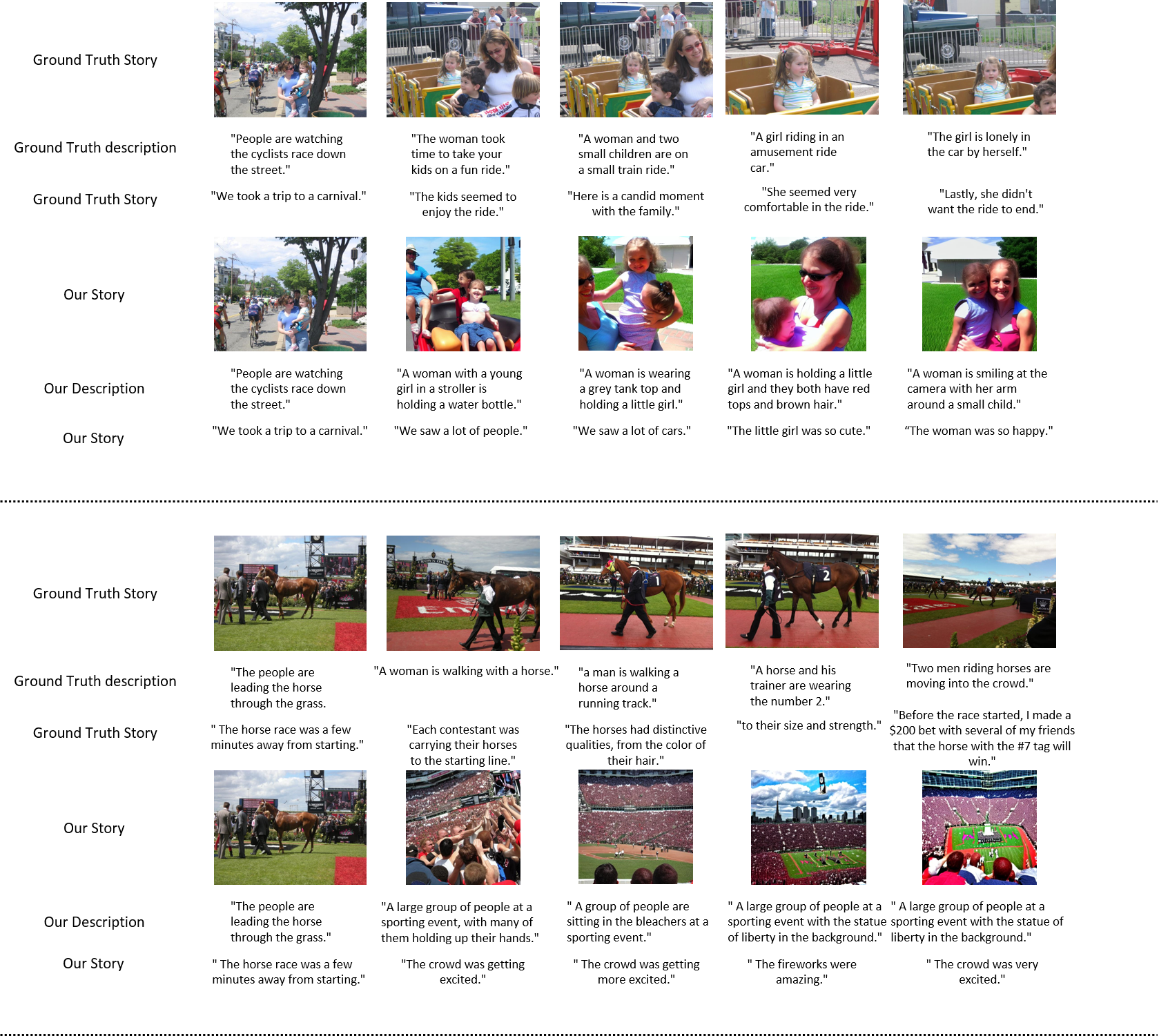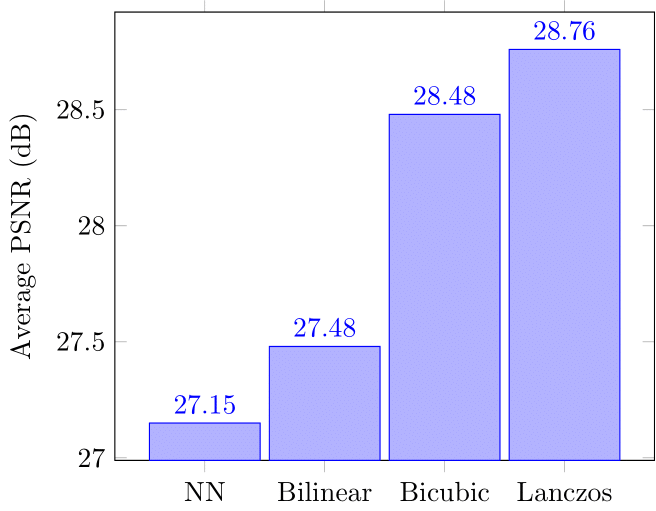publications
publications by categories in reversed chronological order. generated by jekyll-scholar.
2025
-
 Humanity’s Last ExamLong Phan, Alice Gatti, Ziwen Han, Nathaniel Li, Josephina Hu, and 657 more authorsarXiv, Jan 2025
Humanity’s Last ExamLong Phan, Alice Gatti, Ziwen Han, Nathaniel Li, Josephina Hu, and 657 more authorsarXiv, Jan 2025Benchmarks are important tools for tracking the rapid advancements in large lan- guage model (LLM) capabilities. However, benchmarks are not keeping pace in difficulty: LLMs now achieve over 90% accuracy on popular benchmarks like MMLU, limiting informed measurement of state-of-the-art LLM capabilities. In response, we introduce HUMANITY’S LAST EXAM (HLE), a multi-modal bench- mark at the frontier of human knowledge, designed to be the final closed-ended academic benchmark of its kind with broad subject coverage. HLE consists of 3,000 questions across dozens of subjects, including mathematics, humanities, and the natural sciences. HLE is developed globally by subject-matter experts and con- sists of multiple-choice and short-answer questions suitable for automated grading. Each question has a known solution that is unambiguous and easily verifiable, but cannot be quickly answered via internet retrieval. State-of-the-art LLMs demon- strate low accuracy and calibration on HLE, highlighting a significant gap between current LLM capabilities and the expert human frontier on closed-ended academic questions. To inform research and policymaking upon a clear understanding of model capabilities, we publicly release HLE at https://lastexam.ai.
2024
-
 Multiplayer Guts Poker with Staggered PayoutsHyunwoo Park*, and Shiva Oswal*Dec 2024
Multiplayer Guts Poker with Staggered PayoutsHyunwoo Park*, and Shiva Oswal*Dec 2024Multiplayer poker tournaments with staggered payouts present complex strategic challenges distinct from two-player zero-sum games. Traditional models like the Independent Chip Model offer heuristics for chip-to-monetary value conversion but fall short in capturing the nuanced incentives in multi-player settings. We introduce a simplified variant of Guts poker to analytically and computationally explore equilibrium strategies in tournaments with more than two players. For the two-player case, we derive a unique Nash equilibrium with closed-form threshold strategies, highlighting positional advantages. Extending to multiplayer scenarios, we develop a Monte Carlo-based fictitious play algorithm to approximate equilibria, uncovering phenomena such as middle stack pressure. Our findings advance the understanding of tournament poker dynamics.
-
 Visual Story GenerationNevan Giuliani, Maxwell Jones, Alex Lyons, and Hyunwoo ParkMay 2024
Visual Story GenerationNevan Giuliani, Maxwell Jones, Alex Lyons, and Hyunwoo ParkMay 2024In this project we attempt to expand the task of visual storytelling by producing both story captions and images for the remainder of a story just given one initial frame (image and caption). Much previous work on this task focus on generating story captions from images or story images from captions. However, we present a pipeline for doing both simultaneously while ensuring that we have coherence between the story captions, coherence between the images, and alignment between the text and images. The key insight we make in our approach is that story captions are poor inputs to diffusion models so we generate both story captions as well as descriptive captions, the latter of which is used as input in image generation.
-
 Comparative Analysis of Super-Resolution TechniquesJacob Lapin, Yichen Zhang, and Hyunwoo ParkApr 2024
Comparative Analysis of Super-Resolution TechniquesJacob Lapin, Yichen Zhang, and Hyunwoo ParkApr 2024The escalating demand for high-resolution visual content in various domains such as medical imaging, satellite imagery, and consumer electronics necessitates advanced super-resolution (SR) techniques that can enhance image quality beyond the limitations of sensor hardware. Traditional SR methods often struggle to balance detail enhancement with artifact suppression, prompting a shift towards more sophisticated machine learning models. This paper conducts a comparative analysis of contemporary SR techniques, primarily focusing on their performance quantified through the Peak Signal-to-Noise Ratio (PSNR). Our study evaluates multiple leading SR algorithms across diverse datasets ranging from portraits to urban landscapes. By systematically comparing these methods, we aim to identify their strengths and weaknesses in terms of detail reproduction, and computational efficiency. The expected results of our investigation will provide a comprehensive bench marking of existing SR methods, thus facilitating a deeper understanding of their operational dynamics in real-world scenarios. In addition to utilizing standard evaluation metrics such as PSNR, our research introduces a novel metric based on image saliency called Visual Attention-based Quality Metric (VAQM). This new metric aims to assess the effectiveness of SR methods in preserving and enhancing the perceptual relevance of salient features within images, which are crucial for tasks requiring high levels of visual attention. By integrating saliency into our evaluation framework, we seek to provide a more holistic measure of image quality that aligns closely with human visual perception.
2023
-
 A Brief Survey of Model Compression in Language ModelsBrandon Dong, Russell Emerine, Aresh Pourkavoos, and Hyunwoo ParkDec 2023
A Brief Survey of Model Compression in Language ModelsBrandon Dong, Russell Emerine, Aresh Pourkavoos, and Hyunwoo ParkDec 2023Large Language Models are the state of the art for many natural language processing tasks, and their versatility makes them appealing in a variety of applications. However, such models have serious storage and computational demands, and the field of model compression works to lower those requirements. While model compression, especially for deep neural networks, has existed as a field before the advent of LLMs, the size and scope of these models present unique challenges to the pre-existing methods. Promising solutions include new techniques in knowledge distillation, quantization, pruning, and low-rank factorization that can generate significantly smaller models while remaining performant. In this report we provide a detailed review and some empirical verification of these methods, compare their relative advantages and disadvantages, and discuss the state of the field today. For brevity, we will not discuss inference acceleration, efficient prompting, or hardware methods; we focus instead on techniques that concern themselves with memory footprint.